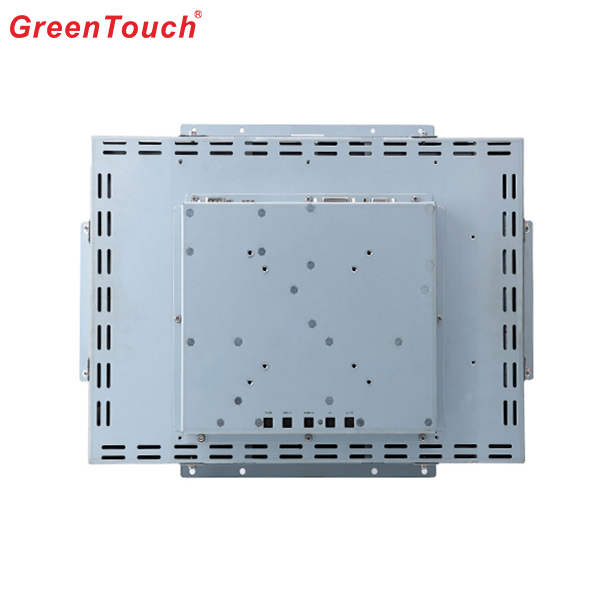In the sound insulation control of the ceiling, attention must be paid to the problem that the sound bridge is isolated from the impact sound.
At present, almost all the home theater audio-visual rooms are built with ceilings fixed directly on the keel. At this time, attention should be paid to the problem of the sound bridge. The so-called acoustic bridge means that the sound passes through the keel, bringing the vibration on one side of the ceiling to the other side of the board. This way of sound propagation is very similar to the way of crossing the bridge. The more the sound bridge, the larger the contact area and the stronger the rigid connection, the more serious the sound bridge phenomenon, and the worse the sound insulation effect.
The use of a highly efficient keel construction method is an effective way to improve the sound insulation performance.
How to adopt a more efficient keel construction method is an effective way to improve the sound insulation effect. It is a good treatment to make the keel structure into a double-layer structure and a staggered structure. The double-layer structure is composed of the main keel and the auxiliary keel. The lower part of the main keel and the auxiliary keel is composed of a decorative surface, a bearing surface and a side surface, and the bearing surface is separated from the decorative surface, which reduces the sound bridge and improves the sound insulation effect. The staggered structure means that the vertical keels are staggered and separated, and the two sides of the plates are not fixed on one keel at the same time, and the heaven and earth keels share one set. According to the actual application, the sound insulation of the staggered keel ceiling will be increased by about 1~3dB compared with the ordinary keel ceiling, while the double keel ceiling is about 7~8dB higher.
In addition, the elastic pad is added between the plate and the keel to form an elastic connection, such as an elastic metal strip or other elastic material, which also has a certain improvement on the sound insulation of the ceiling, and can even reach about 3 dB at most.
After the keel of the bottom of the ceiling is built, some acoustical props with excellent acoustic function are selected, and the bottom keel is used to achieve better sound insulation effect.
The sound insulation of the walls is in the ideal home theater audio-visual space. The four-sided partition is preferably a single partition with no other components, including doors and windows. But in the actual family situation, this is impossible, at least the entry and exit is essential. In addition, some users keep windows in order to preserve the home atmosphere or to obtain a unique landscape. Each of the different components on the partition wall will have different sound insulation, thus reducing the overall sound insulation effect of the partition wall. For example, a 0.5m2 window is opened on the wall of 55m with a sound insulation of 55m, and the sound insulation of the window is only 25dB, so the overall sound insulation of the partition wall is reduced to about 38dB. Welcome to the strong home theater network. Regarding the sound insulation performance of the partition wall, we must first consider whether there are any cracks and holes in the partition wall. Because it is the same as the window, this will greatly reduce the sound insulation of the partition wall, as long as the wall has a thousand points. The gaps and holes in one will greatly reduce the integrated sound insulation by more than 10dB. This illustrates the importance of sealing the partition to avoid air gaps. This situation is particularly prone to appear on double-walled walls with a keel structure. Usually, plastic elastic strips are placed when the keel is installed around the wall. At the same time, the outer wall should be installed with a wrong seam, and the inner layer can be unchecked. Sew, only the outer layer joints, which can reduce the impact on the sound insulation of the partition wall.
After ensuring the sealing of the partition wall, it is necessary to analyze the sound insulation performance of the partition wall by combining the mass law of the sound insulating material, the resonance frequency, and the matching effect. According to the above, the uniform and dense partition wall, the sound insulation will be controlled by the mass law, and the sound loss will increase by 6dB for every doubling of the mass. However, for ordinary 30cm concrete walls, it is impractical to use this method to increase the sound insulation performance of the partition wall. However, we can solve this problem through a multi-layer composite partition. The multi-layer composite partition wall structure is a commonly used structure of the sound insulation wall, and has good sound insulation performance.
The multi-layer composite partition wall is composed of different material layers, each of which has a different density, and each sound is attenuated by different materials. This method can reduce the cost and reduce the loss of space. In addition, the addition of an air layer between the wall materials is also an effective treatment, but care must be taken to avoid rigid connections between the two materials, causing acoustic bridge problems. Because the rigid connection provides the transmission of vibration to transmit the sound to the room without loss. In the air layer, sound absorbing materials can be added to increase the sound insulation ability of the multi-layer composite partition wall. If the wooden keel is connected, the sound absorbing material will cause damping between the material plates to reduce vibration, and the sound absorbing material can be added. About 5dB; if it is a light steel keel, the coupling of the two layers has been weakened, and the amount of sound insulation obtained can be increased to about 8dB. As for what kind of sound absorbing material is inserted inside, it does not cause much change to the sound insulation performance.
In addition, for the amount of sound insulation that needs to increase the low frequency sound, the use of a multi-layer composite partition wall is also an excellent treatment method, preferably with a cavity and a staggered keel or a flexible connection between the components.
The problem of coincidence is also a link worthy of attention, especially the multi-layer composite partition wall is more likely to coincide with the single-layer partition wall. The single-layer partition wall with different thickness of gypsum material is taken as an example for illustration. The critical frequency of the 12mm and 15mm gypsum board is 3.15kHz and 2kHz respectively, so each of them also has the problem of falling sound insulation in the corresponding frequency band. It is worth noting that the sound insulation of the 15mm gypsum board at 2kHz is very serious. Even according to the mass law, it is thicker than the 12mm board, but the sound insulation at this frequency is far less than the 12mm board. The critical frequency of the double-layer identical plate overlap is basically the same as that of the single-layer plate. However, due to the vibration superposition of the double layer, the anastomosis effect will be more intense, and the resulting sound valley is deeper. However, the sound insulation of the single-layer partition wall is far from meeting the requirements of the sound insulation of the home theater audio-visual room, and the structure of the multi-layer composite partition wall is necessary. It is necessary to consider the use of plates of different thicknesses for lamination, separating the respective matching frequency bands from each other, which is more advantageous for the overall sound insulation performance. In practical applications, it can be found that a partition wall of 12mm and a 15mm board will have a higher sound insulation than a double 15mm partition, which is the result of the weakening of the anastomosis effect.
The higher the surface density and the thicker partition wall, the frequency of the anastomosis often appears in the range of 250-2000 Hz. The higher the weight, the deeper the anastomotic valley appears in the low frequency range of the sound insulation curve, which greatly reduces the low frequency of the partition wall. Aspects of sound insulation performance. Therefore, if there is a high requirement for low-frequency sound insulation, this problem must be paid attention to when performing sound insulation processing.
In summary, the use of multi-layer composite partitions composed of different material densities is the most effective method. It is also an effective method to add an air layer in the middle of the partition wall, but rigid contact must be avoided.
Doors are an important factor affecting the sound insulation effect, but in the family environment, they are often indispensable.
The soundproof door is an important part of the sound insulation of the entire audio-visual room . The sealing part of the door seam must be handled to ensure that there is no gap left. The door normally used in the home building does not use special sound insulation, universal sound insulation. Performance is relatively low. The wood board made of wood board, wood splint and fiber density board generally has low weight, large door seam and poor sound insulation performance, generally between 15 and 20 dB. The steel door with the angle steel as the frame and the steel plate as the surface layer has a larger weight and better sealing performance, and the sound insulation is usually between 20 and 25 dB. There is also a more common plastic steel door, which is light in weight and has poorer metal sealing performance. The sound insulation is generally not more than 15dB.
The above three common household doors are actually inferior in sound insulation performance, and it is necessary to perform appropriate sound insulation improvement on the door. First, it is necessary to increase the weight and thickness of the door. The weight of the conventional building acoustic door is less than 50kg/m2 and the thickness is not more than 8cm. However, please do not blindly increase the weight and thickness of the door. If the weight is too large, it will be difficult to open. If the thickness is too large, it will affect the opening and the lock cannot be installed. It is recommended to use materials of different densities, such as multi-layer steel plates and MDF, and the thickness of each layer should be different to minimize the sound insulation problem of resonance and anastomosis. If there is an air layer in the door, it is recommended to fill the sound insulation material, which can effectively improve the sound insulation effect.
For the treatment method of the door seam, it is mainly to seal it with a sealing strip or a sealing sponge, or to use a mechanical pressing device to turn the wrench when the door is locked, and press the pressing device against the door frame by mechanical linkage to obtain a good Sealing. Welcome to China Home Theater Network. If you have a conditional friend, you can even use a double-door structure to improve the sound insulation performance. If there is a certain space between the two doors, a strong sound absorbing material is installed in the space, so that a sound barrier with high sound insulation can be formed. The structure ensures excellent sound insulation.
Since the audio-visual room is mostly built in residential areas, sound insulation control is a very important architectural acoustic treatment method in order not to be affected by external environmental noise and not affect other people's rest and daily activities. For the overall sound insulation of the audio-visual room, it is usually required to be more than 50dB, and the sound insulation of the wall, ceiling and floor should be more than 55dB, and the doors and windows should be above 45dB. In the actual process of processing, we must pay special attention to the resonance and anastomosis effects that are easy to ignore. We should not consider the problem only from the law of quality. Comprehensive treatment is the most ideal.
The Touch Monitor is a product developed and designed by ourselves. It has been sold for more than 6 years and has exceeded 160,000 units. At present, it is running very well. It mainly customizes different touch technologies, different sizes, different interfaces, connecting cables and power supply parts to meet the needs of guests. We provide customers with the choice of Resistive Touch Screen, Capacitive Touch Screen, Infrared Touch Screen and nano touch foil, and customize various interfaces for customers, such as: VGA, DVI, HDMI, DP and so on. It is mainly used in banks, hospitals, government units, airports, railway stations, supermarkets, real estate and other places.
Product show:






Touch Monitor
Touch Screen Monitor,Multi Touch Display Monitor,Outdoor Touch Screen Monitor,Waterproof Touch Monitor,Commercial Touch Screen Monitor,KTV Touch Screen Monitor
ShenZhen GreenTouch Technology Co.,Ltd , https://www.bbstouch.com